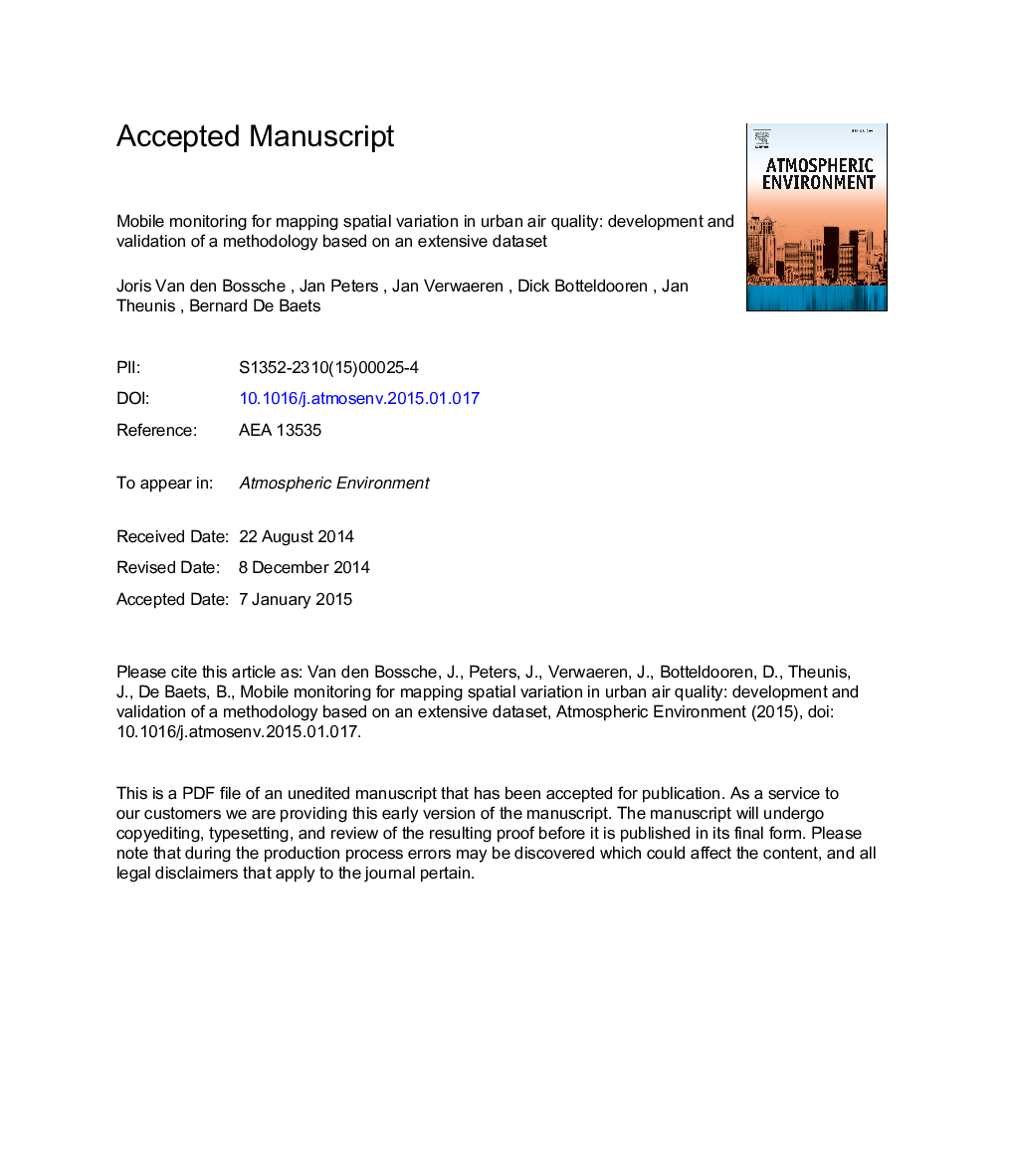| Article ID | Journal | Published Year | Pages | File Type |
|---|---|---|---|---|
| 6338678 | Atmospheric Environment | 2015 | 33 Pages |
Abstract
A large set of black carbon (BC) measurements was collected in Antwerp, Belgium, using a bicycle equipped with a portable BC monitor (micro-aethalometer). The campaign consisted of 256 and 96 runs along two fixed routes (2 and 5Â km long). Large gradients over short distances and differences up to a factor of 10 in mean BC concentrations aggregated at a resolution of 20Â m are observed. Mapping at such a high resolution is possible, but a lot of repeated measurements are required. After computing a trimmed mean and applying background normalisation, depending on the location 24-94 repeated measurement runs (median of 41) are required to map the BC concentrations at a 50Â m resolution with an uncertainty of 25%. When relaxing the uncertainty to 50%, these numbers reduce to 5-11 (median of 8) runs. We conclude that mobile monitoring is a suitable approach for mapping the urban air quality at a high spatial resolution, and can provide insight into the spatial variability that would not be possible with stationary monitors. A careful set-up is needed with a sufficient number of repetitions in relation to the desired reliability and spatial resolution. Specific data processing methods such as background normalisation and event detection have to be applied.
Related Topics
Physical Sciences and Engineering
Earth and Planetary Sciences
Atmospheric Science
Authors
Joris Van den Bossche, Jan Peters, Jan Verwaeren, Dick Botteldooren, Jan Theunis, Bernard De Baets,
